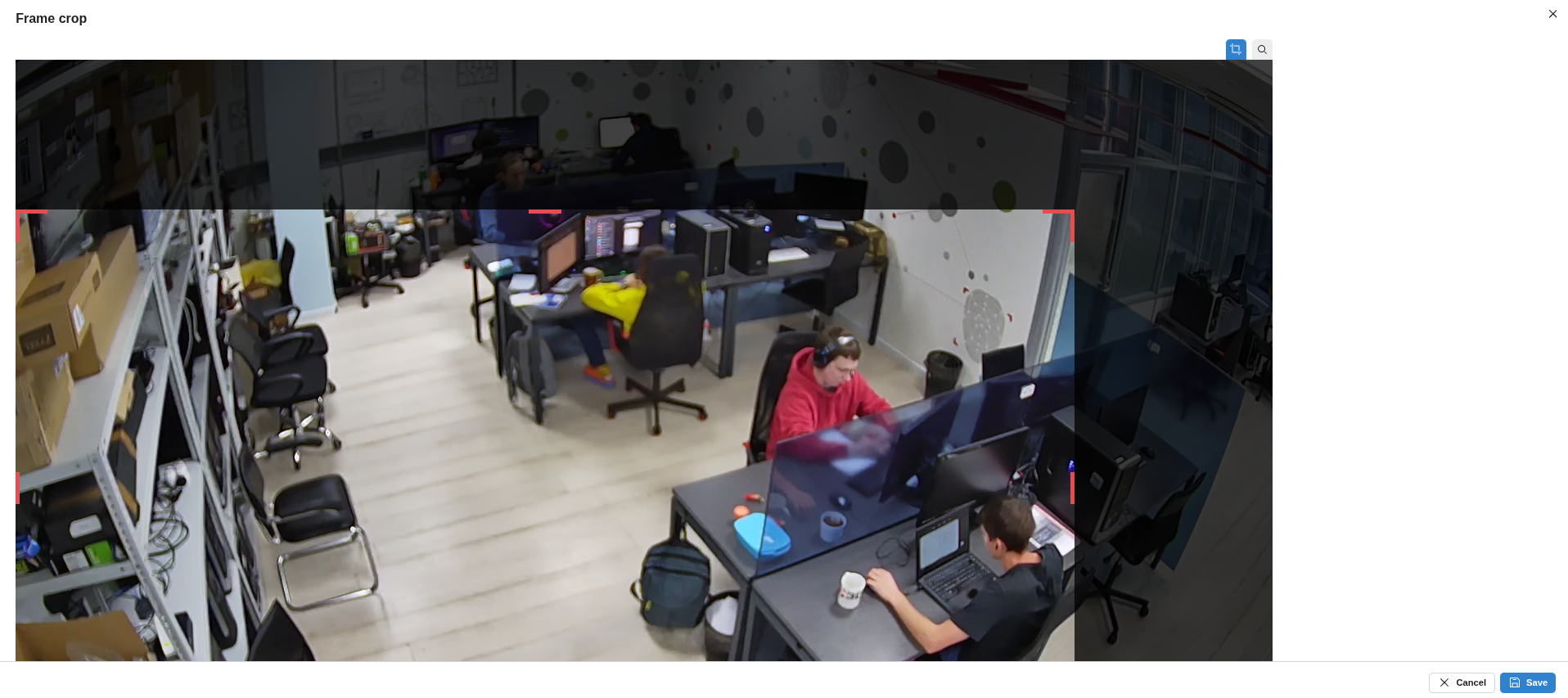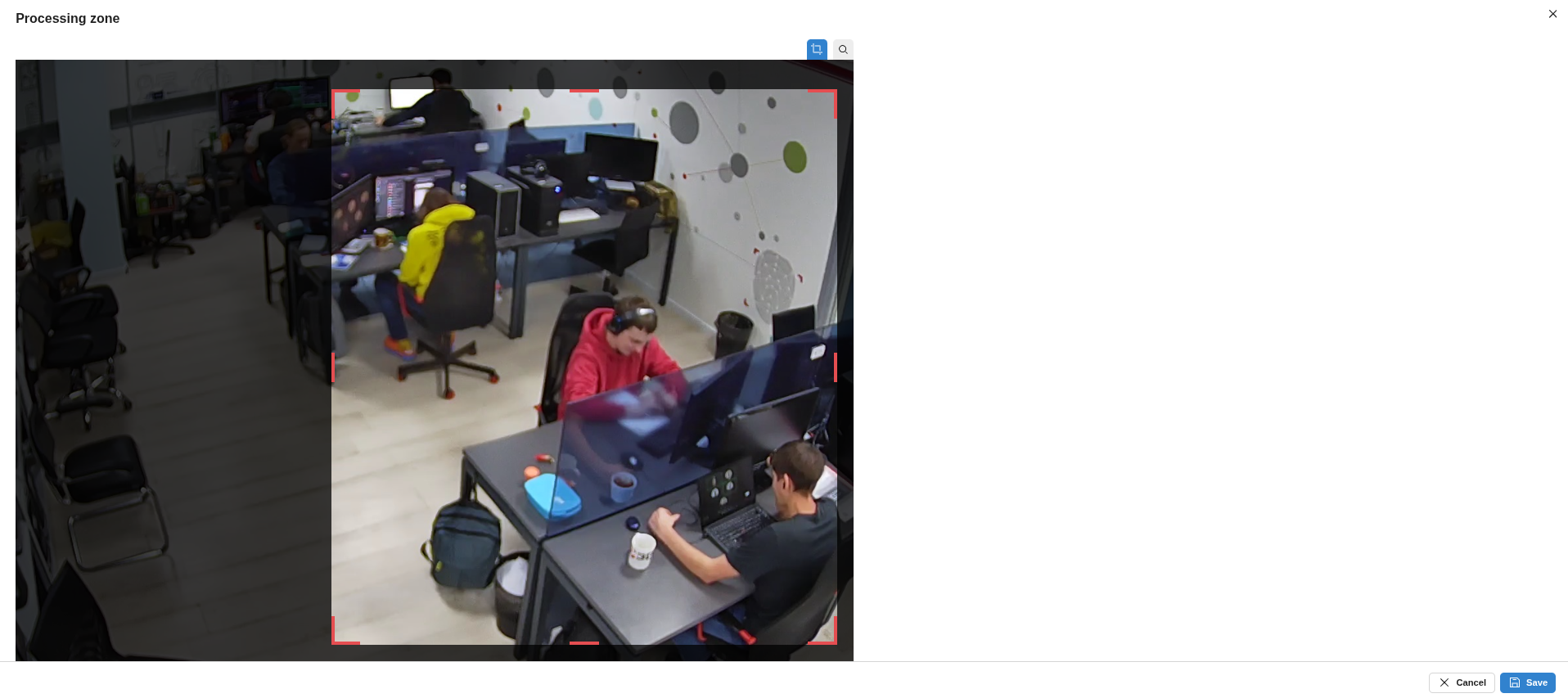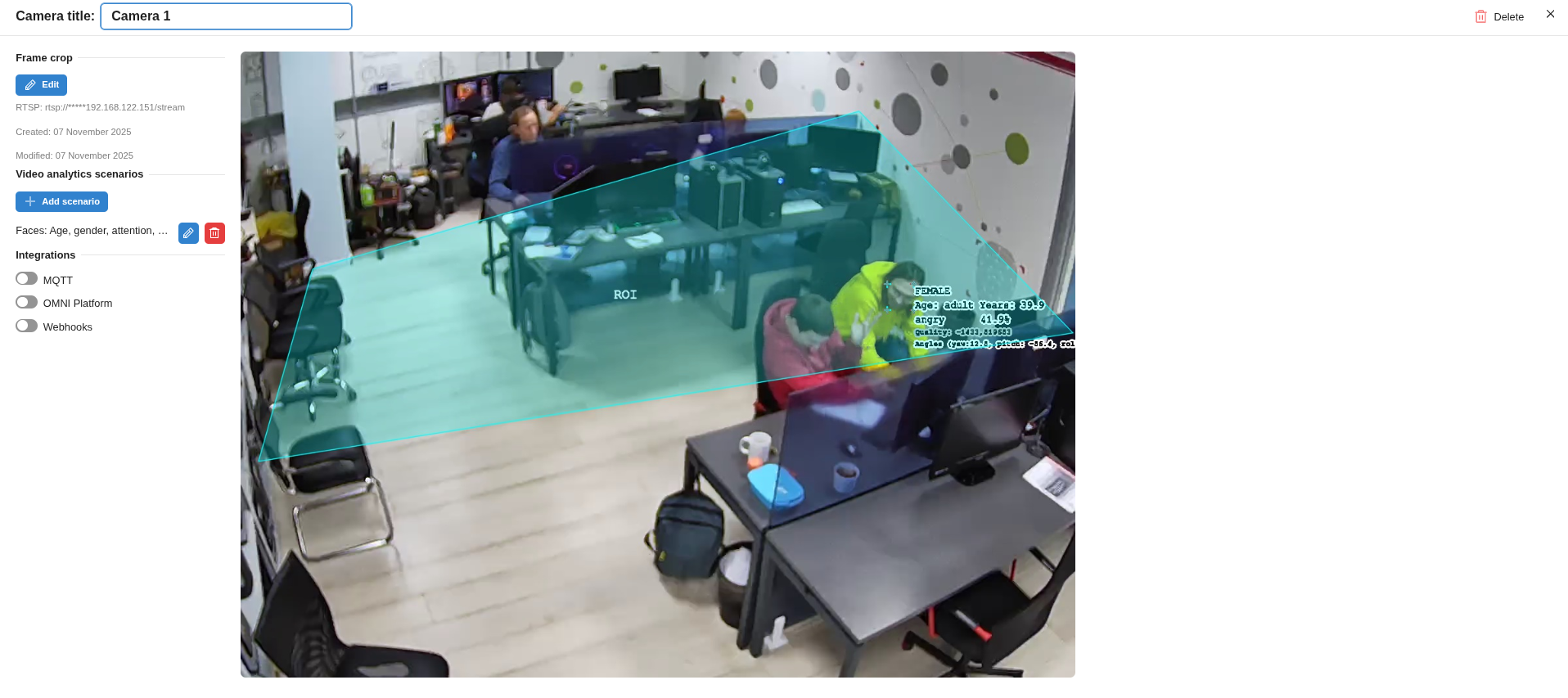Configuration
You can change the configuration settings of the OMNI Agent through the Settings section at the top of the web interface.

System
In the settings, you can:
Choose the format of saved images — PNG or JPG
Set the quality threshold (default — 99): frames with lower quality will not be processed
Frame processing zones
In OMNI Agent, you can flexibly configure frame processing zones for each surveillance camera or processed video file.
Frame cropping
Defines the visible area of the image that is sent to the OMNI Platform server and used for video analytics tasks. This allows you to exclude unnecessary areas (e.g., walls, windows, or inactive regions), reducing system load.
To configure frame cropping:
Select the required camera.
Click the cropping icon in the upper-right corner of the preview and choose a predefined cropping option optimized for face or body detection.
Alternatively, manually adjust the area by dragging the red corner markers in the preview.
Afterward, save your settings.

Video analytics zone
Defines the area of the frame where video analytics scenarios (such as counting, detection, or tracking) are applied.

Region of interest (ROI)
The area within the video analytics zone that triggers events when objects appear in it.

Integrations
Sending Data to OMNI Platform (enabled by default)
In the settings, you can:
specify the agent name;
set the server name;
define the username;
disable proxy usage for the host (disabled by default);
enable system proxy usage.
Sending Data via Webhook (sending best frames via webhooks — enabled by default)
To add a webhook, specify the data type (processes / events) and the webhook URL.
Sending Data via MQTT (sending best frames via MQTT — enabled by default)
In MQTT settings, specify:
Address: the address of the MQTT broker receiving processes.
Port: the port on which the MQTT broker listens for connections.
Topic: the topic in the MQTT broker to which processes will be sent.
Client ID: a unique identifier used when connecting to the MQTT broker.
Proxy server configuration
If your Internet access is provided through a proxy server, you’ll also need to configure it for installing and using OMNI Agent.
To enable proxy usage:
Click the Settings icon in the OMNI Agent web interface.
Choose System or Custom proxy mode in the opened tab.
If using a custom proxy, enter its address in the provided field.
Click Save to apply changes.
Logging
You can view logs in the file logfile_*.log located in the log folder. To change the logging level, open the configuration file log_params.json and set the sev_level(string) parameter.
Available logging levels: TRACE, DEBUG, INFO, WARNING, ERROR, FATAL (listed in order of increasing severity).